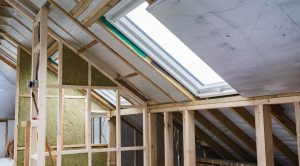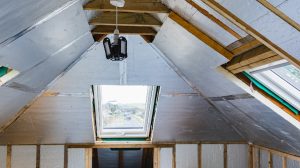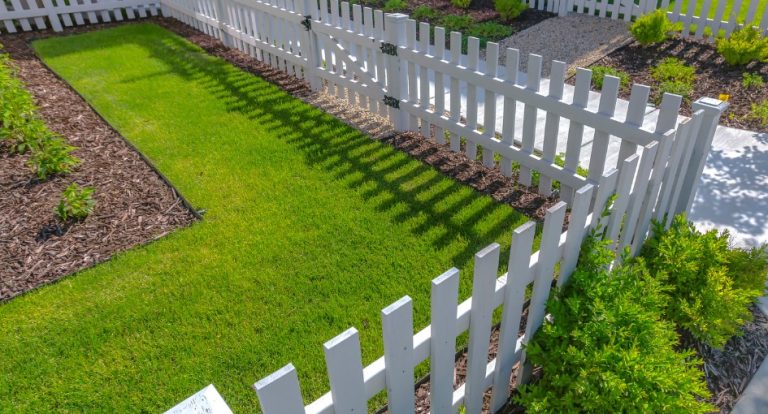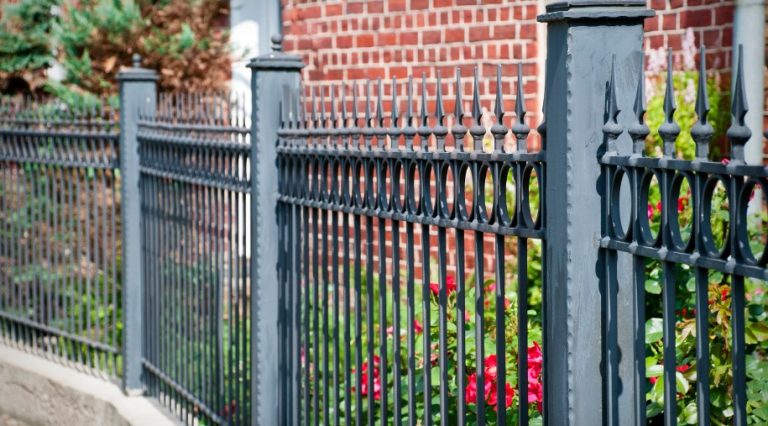Converting your loft into a usable space is one of the most effective ways to add value and functionality to your home. Whether you’re transforming it into an extra bedroom, a home office, or even a cosy family room, a loft conversion can significantly increase your property’s value without the need to move house.
However, before you start making plans, one crucial question arises: do you need planning permission for a loft conversion?
The answer isn’t always straightforward. In the UK, planning permission for a loft conversion is required under specific circumstances.
In this comprehensive guide, I’ll walk you through when planning permission is needed, how permitted development rights may apply, and what other regulations, such as building control, you need to keep in mind.
Understanding Loft Conversions and Planning Permission in the UK

Loft conversions are a cost-effective and popular way to extend living space without encroaching on your garden.
However, since loft conversions alter the structure of your home, they are subject to planning and building regulations. The need for planning permission depends on various factors, such as the scale of the conversion, the type of property, and its location.
In the UK, planning laws exist to maintain the character of neighbourhoods and to ensure that any developments don’t negatively impact surrounding properties or the environment.
While some minor alterations and conversions are covered under permitted development rights, larger or more complex projects may require full planning permission.
Permitted Development Rights for Loft Conversions
Many homeowners are able to convert their lofts without needing formal planning permission, thanks to the UK’s permitted development rights.
These rights allow certain alterations to your home without the need to submit a planning application, provided your project complies with specific rules and limits.
Conditions for Permitted Development
- Volume: The additional roof space created must not exceed 40 cubic metres for terraced houses and 50 cubic metres for detached and semi-detached properties.
- Height: The loft conversion must not exceed the highest part of the existing roof, and no raised structures (such as balconies or terraces) are permitted under permitted development.
- Materials: The materials used for the conversion, including roofing and cladding, must be in keeping with the appearance of your existing home.
- Windows: Any side-facing windows must be obscure-glazed and cannot open unless positioned at least 1.7 metres above the floor.
- Location restrictions: If you live in a conservation area, a National Park, or your property is a listed building, permitted development rights are more restricted, and you’ll likely need planning permission even for minor conversions.
If your loft conversion complies with these regulations, you can proceed without submitting a planning application, saving time and money.
Do You Need Planning Permission for a Loft Conversion With Dormer?

A dormer loft conversion is one of the most popular types of loft conversions in the UK. It involves extending the roof vertically to create additional headroom and floor space.
Dormer windows are often installed to allow more natural light into the loft. While dormer conversions can be carried out under permitted development, certain limitations must be observed.
For a dormer conversion to qualify under permitted development:
- The additional roof space created must fall within the volume limits of 40 cubic metres (for terraced houses) or 50 cubic metres (for semi-detached or detached homes).
- The dormer should not extend beyond the plane of the roof slope on the principal elevation (usually the front of the house).
- It should not include balconies, verandas, or raised platforms.
- The extension must not rise higher than the highest point of the roof.
If these conditions are met, your dormer loft conversion can proceed without needing planning permission.
However, larger dormer extensions or those that significantly alter the roof’s appearance (especially when facing the street) will require a planning application.
Do You Need Planning Permission for a Loft Conversion With Velux Windows?
Installing Velux windows (roof windows) is a popular option for loft conversions because they bring in natural light without altering the structure of the roof significantly.
These windows are flush with the roof’s surface, making them less intrusive and often falling under permitted development rules.
However, there are some restrictions to be aware of when installing Velux windows:
- The windows must not project more than 150mm from the existing roof plane.
- The windows should not sit higher than the highest part of the roof.
- If your home is located in a conservation area, or if it’s a listed building, additional restrictions may apply, and planning permission will likely be required.
For most homeowners, Velux windows can be installed under permitted development, provided these conditions are met. This makes them a convenient option when you want to brighten your loft space without the hassle of a formal planning application.
What Types of Loft Conversion Require Planning Permission?

Several types of loft conversions may require planning permission, especially if they involve significant structural changes or exceed permitted development rights. Here’s a breakdown of the loft conversion types that typically require planning permission in the UK:
1. Dormer Loft Conversions (Large or Front-Facing)
While dormer loft conversions can sometimes be carried out under permitted development, larger or more extensive dormers often require planning permission. Specifically:
- Large Dormer Conversions that exceed the volume limits for your property type (40 cubic metres for terraced houses, 50 cubic metres for detached or semi-detached houses).
- Front-Facing Dormers that alter the principal elevation of the property (the side facing the street).
- Dormers with balconies or verandas also require planning permission, as they are considered significant structural additions.
2. Mansard Loft Conversions
A mansard conversion is a more substantial alteration, involving raising one side of the roof and creating a flat roof section. This type of loft conversion almost always requires planning permission because:
- It involves major changes to the roof shape.
- The roof height is often increased, which is not permitted under development rights.
- Mansard conversions often create additional windows or alter the external appearance of the home.
3. Hip-to-Gable Loft Conversions
A hip-to-gable conversion involves extending the side of a sloped roof (hipped roof) to create a vertical gable wall, thereby increasing the interior space. This type of conversion often requires planning permission because:
- It alters the roof structure significantly.
- The external appearance of the house changes, especially if the gable extends towards the street-facing side of the property.
4. Roof Lifts (Raising the Roof Height)
Any loft conversion that involves raising the height of your roof will require planning permission. This is because permitted development rights prohibit increasing the existing roof height. Roof lifts are common when the existing loft space doesn’t meet the minimum height requirements for conversion.
5. Loft Conversions in Conservation Areas or Listed Buildings
If your property is located in a conservation area or is a listed building, even small loft conversions that would typically fall under permitted development are likely to require planning permission. This is because:
- Conservation areas have stricter controls to preserve the character of the neighbourhood.
- Listed buildings are subject to additional regulations to maintain their historical or architectural significance.
6. Conversions With Balconies, Verandas, or Roof Terraces
If your loft conversion includes a balcony, veranda, or roof terrace, planning permission is required. These features alter the external appearance of the house and can impact neighbours’ privacy, which means they are not covered by permitted development rights.
7. Rear or Side Roof Extensions That Exceed Permitted Volume
If your loft conversion includes an extension to the rear or side of the roof that exceeds the permitted volume limits (40 or 50 cubic metres), you will need to apply for planning permission. This is common with large rear dormers or roof extensions designed to significantly increase the loft’s living space.
How to Apply for Loft Conversion Planning Permission?

If your loft conversion requires planning permission, here are the steps you’ll need to follow:
- Hire an architect or designer: To prepare detailed architectural drawings and plans for your loft conversion. These will need to be submitted as part of your planning application.
- Submit your planning application: This can be done online through the Planning Portal (www.planningportal.co.uk) or directly with your local council. Your application will need to include detailed drawings, a site plan, and other relevant documents.
- Planning authority review: Once submitted, the local planning authority will review your application. They may consult neighbours, the local parish council, or other relevant bodies to ensure the project fits with the neighbourhood’s overall character and appearance.
- Approval timeline: The process typically takes up to 8 weeks, during which the planning authority will either approve or reject your application. In some cases, conditions may be attached to the approval, requiring specific changes or stipulations.
The cost of a planning application in England is approximately £206, though fees can vary slightly depending on location and specific circumstances.
How Much Does Applying for Planning Permission for a Loft Conversion Cost?

The cost of applying for planning permission for a loft conversion can vary depending on the complexity of the project and the specific fees involved. Here’s a detailed breakdown of the costs you can expect when applying for planning permission:
1. Planning Application Submission Fee
The basic fee for submitting a planning application for a loft conversion is currently £238, but this fee is expected to rise in the near future. This fee covers the cost of your local planning authority processing your application and reviewing your proposed changes to ensure they comply with local planning regulations.
2. Additional Costs to Factor In
While the planning application fee itself is relatively straightforward, you may need to account for other costs that come with preparing the application and ensuring your loft conversion complies with regulations:
- Planning Consultant’s Fees: If your loft conversion project is complex or you’re unfamiliar with the planning process, you may choose to hire a planning consultant to advise and support you through the application. A consultant’s fees typically start at £500 but could be higher depending on the project and the level of involvement required.
- Structural Survey: For more extensive loft conversions, particularly those involving significant structural changes, a structural survey may be necessary to assess the integrity of your roof and home. A survey can cost around £1,500.
- Architectural Design and Drawing Production: You will need detailed architectural drawings to submit as part of your planning application. The cost of hiring an architect or designer to produce these plans typically starts around £2,000, but this can rise depending on the complexity of the loft conversion.
3. Permitted Development Route Costs
If your loft conversion falls under permitted development (where planning permission is not required but you still want formal confirmation), you can apply for a Lawful Development Certificate (LDC) instead of planning permission. The LDC application fee is lower, currently £128, which is significantly less than the £238 planning application fee. However, you may still need to account for the other costs mentioned, such as design work and structural assessments.
Loft Conversion Building Regulations You Must Follow

Even if your loft conversion falls under permitted development and does not require planning permission, you’ll still need to comply with building regulations. Building regulations ensure that your conversion is safe and structurally sound. These regulations cover aspects such as:
- Structural stability: The floor of your loft must be able to support the additional weight of the new room. The existing roof structure may also need reinforcing.
- Fire safety: Loft conversions must include fire-resistant materials and appropriate means of escape. This often involves installing fire doors and possibly altering the staircase layout.
- Insulation: Adequate insulation must be installed to meet energy efficiency standards and keep the space warm during the colder months.
Building control officers will inspect the project at various stages to ensure compliance with these regulations. You must also obtain a completion certificate once the work is finished, confirming that the conversion meets all the necessary standards.
Tips for Ensuring Your Loft Conversion Complies With UK Planning Laws
- Consult with professionals: Engage an architect or planning consultant early on to help navigate the intricacies of planning permission and building regulations. They can ensure your project adheres to local planning laws.
- Research your local council’s rules: Some councils have stricter regulations, particularly in conservation areas. Check for any local restrictions that may apply to your property.
- Stay within permitted development limits: Sticking to the guidelines for permitted development can save you the hassle and expense of applying for planning permission.
- Seek advice for listed buildings: If you live in a listed property, it’s essential to get expert advice. Special permissions, such as Listed Building Consent, may be required even for minor alterations.
What Are the Types of Homes That Need Planning Permission for a Loft Conversion?

Several types of homes are more likely to require planning permission for a loft conversion, typically due to location, building type, or specific regulations that apply to their structure. Below are the types of homes that often need planning permission for a loft conversion:
1. Homes in Conservation Areas
Properties located in conservation areas are subject to stricter planning regulations to preserve the architectural and historical character of the neighbourhood.
Loft conversions that may be allowed under permitted development in other areas might require planning permission in these designated zones. For example:
- Any visible changes to the roof, such as dormer windows, may not be permitted.
- The use of specific materials or window styles may be restricted.
2. Listed Buildings
If your home is a listed building, you will almost certainly need planning permission for any loft conversion, regardless of its scale.
Listed buildings are protected due to their historical or architectural importance, and any alteration to the structure (even internally) typically requires special permission known as Listed Building Consent, in addition to planning permission. Specific considerations include:
- The type of materials used for the conversion must match the historical character of the building.
- Structural changes, including window or roof alterations, are heavily regulated.
3. Homes with Significant Structural Changes
If your loft conversion involves major structural alterations, such as:
- Raising the roof height
- Hip-to-gable conversions (changing a sloped roof to a vertical gable)
- Mansard loft conversions (where the roof slope is altered to create more space)
These types of conversions generally require planning permission because they significantly change the appearance and structure of the property, often exceeding the limits of permitted development.
4. Homes in National Parks or Areas of Outstanding Natural Beauty (AONB)
If your property is located within a National Park or an Area of Outstanding Natural Beauty (AONB), it is likely that you will need planning permission for a loft conversion.
These areas are protected to maintain their scenic and natural qualities, and developments are often heavily restricted to ensure that any building work aligns with the area’s aesthetic and environmental values.
5. Homes with Existing Extensions or Loft Conversions
If your property already has a loft conversion, large extension, or has reached the limit of its permitted development rights through other alterations, you will likely need planning permission to carry out additional loft conversions. This is because:
- The total volume of extensions allowed under permitted development is capped at 40 cubic metres for terraced houses and 50 cubic metres for detached and semi-detached homes.
- If your previous alterations already use up this allowance, further conversions require planning permission.
6. Homes with Front-Facing Loft Conversions
Any loft conversion that involves altering the front-facing roof of the property, especially adding dormer windows, typically requires planning permission.
This is because front-facing alterations are more likely to affect the visual appearance of the home from the street, which is often subject to stricter planning controls to preserve the street scene.
7. Homes with Roof Extensions or Raised Roof Heights
- If your loft conversion involves raising the height of the roof, you will need planning permission, as permitted development does not allow roof height changes.
- Roof extensions that alter the shape or size of the roof, such as large dormer extensions, may also require planning permission, especially if they exceed the permitted volume limits or change the roofline significantly.
Conclusion
Undertaking a loft conversion is an exciting project that can transform your home. However, it’s crucial to ensure that your conversion complies with planning laws and building regulations.
While many loft conversions are allowed under permitted development, larger or more complex projects will require planning permission.
By understanding the rules, consulting with professionals, and staying informed about local regulations, you can ensure a smooth, compliant loft conversion process that enhances your home’s value and functionality.
FAQs About Loft Conversions and Planning Permission
Do all loft conversions require planning permission in the UK?
No, many loft conversions do not require planning permission if they fall under permitted development rights. However, larger or more complex conversions may require formal approval.
What is the maximum size for a loft conversion without planning permission?
The maximum size is 40 cubic metres for terraced houses and 50 cubic metres for detached or semi-detached houses.
Do you need planning permission for a dormer loft conversion in a terraced house?
Not necessarily. Dormer conversions can often be carried out under permitted development, provided they meet the volume limits and do not extend beyond the roofline of the principal elevation.
Are Velux windows allowed under permitted development?
Yes, Velux windows generally fall under permitted development as long as they do not protrude more than 150mm from the roof surface.
What are the penalties for not getting planning permission?
Carrying out a loft conversion without the necessary planning permission can result in fines or enforcement action, including the possibility of having to undo the work.
How long does planning permission take for loft conversions?
The process typically takes around 8 weeks from the submission of the application.
Can I get planning permission after the loft conversion is done?
Yes, but this is known as retrospective planning permission. However, approval is not guaranteed, and it can be more complicated to secure than applying beforehand.






